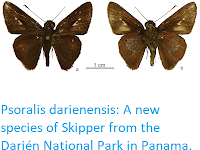The public has been warned to be wary after colonies of Oak Processionary Moth caterpillars, Thaumetopoea processionea,
have been sighted in several parts of Milton Keynes this week. Forestry England issued the warning about the caterpillars, which are
native to southern Europe, after large colonies were spotted in gardens and parks in the Buckinghamshire town. The caterpillars are covered in a dense coat of tiny hairs,
which are covered in toxins that can cause skin complaints and
respiratory problems, particulalrly in children, and which can achieve
very high population densities in countries, such as the UK, where they
have no natural predators.
Oak Processionary Moth caterpillars, Thaumetopoea processionea, on a tree trunk. Henry Kuppen/Forest Research.
Oak Processionary Moths are native to parts of Southern and Central
Europe, where they have a number of natural predators. However a
combination of a warming climate and accidental transplantation by
Humans has led to the species becoming established in a number of
countries in Northern Europe, where, in the absence of predators, they
can form very large colonies, presenting problems for public health. They were first introduced to England by accident in 2005, and have spread across much of the southeast of the country.
As well as the obvious problems caused by detect contact with the
caterpillars, the detached hairs, which can remain toxic for up to a
decade, can present problems in themselves. Each individual hair has
very little toxin, and does not present any danger to Humans, but they
hairs can become concentrated in places such as the surfaces of still
ponds, or in the hoppers of lawnmowers, resulting in unexpected contact
with sufficient hairs to cause problems in places where the caterpillars
are not present, which is particularly hazardous as the cause of the
health problems triggered will not be clear, delaying appropriate
treatment.
See also...
Follow Sciency Thoughts on Facebook.







